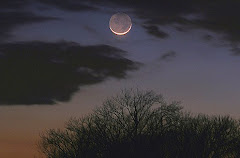I drafted this article which is drawn mostly from the
Fabien Maman radio interview with
Jonathan Goldman last year and his Tama-Do Academy books. In a nutshell, it describes the science and reasoning behind his pioneering sound therapy treatment system.
According to those in the sound healing world, music is the universal language. Fabien Maman experienced what he calls his first “meditative concert”—when touring Japan as a musician. He was first confused because Japanese audiences did not clap after each song like most Western audiences. It was this experience that helped Maman discover that music has a cosmic vibration that can travel through the field, become absorbed by the listener and then can return to the musician; and that clapping hands can get in the way of this feedback.
CELLULAR RESEARCH
Fabien’s most famous book, “
The Role of Music in the 21st Century” contains the story of Maman’s research. At that time he was testing the effects of musical instruments and tones on human cells. His experiments evaluated the double bass, human voice, vibraphone, flute, gong, and guitar, among others, and were conducted from 1 a.m.-5 a.m., between the hours when the Paris subway was closed. He played musical notes on a scale with different instruments, one note at a time and each time examined how blood cells changed shape and appearance. Maman discovered through this process that sound was changing the cells' shape and color; “doing something around people and cells; and around the aura of people.” To Maman, this was proof positive on the power of sound and its ability to help the body on a cellular level-- not just internally but externally.
Maman believes that sound travels first through the layers of the “subtle bodies” surrounding the cells and then it travels through to the physical body. On one hand, his results showed that different notes enabled healthy cells to expand, change shape or change color. On the other hand, cancer cells responded negatively to dissonant tones, which they could not handle in vitro, according to Maman. "With enough time, these cells would explode." Certain cells responded well to a frequency of a certain instrument, while others did not. But The human voice, he concluded, was the most powerful timbre of sound of all the instruments he tested. "The human voice carries something in its vibration that makes it more powerful than any musical instrument: consciousness."
Consistently, around the middle of the scale, there would form what Maman calls “a mandala, which represented what might be described as a sonic sweet-spot particular to an individual, or what Maman calls the "fundamental sound" of the person. To Fabien, these results confirmed that sound is a more powerful healing agent than we think.
THE “AURA OF SOUND”
Maman believes that the healing force of sound is not primarily in the striking of a note, it lies in the overtones and the harmonics that occur when the tone starts to fade, even when the tone can no longer be heard or is out of the range of human hearing. He believes that these can penetrate the aura and the body when it is naturally struck and acoustically shaped. Having to contend with the loud volumes and harsh modern urban sounds can expose people to detrimental sound waves that deplete the subtle field and shoot energy out of the body. People are often unaware of how sound can bombard their space. If the healing part of sound is primarily in the overtone, as Maman suggests, and the power of the harmonics is in the shape of the sound then most healing sounds "must be very subtle. Bigger and louder is not always better."
TAMA-DO ACADEMY--THE WAY OF THE SOUL
Maman was taught early on about the
Kototama, which is an ancient science of vocalization and sound. After putting on hold his musical career, he was given the inspiration to start an academy for the development of human beings while he was in Egypt. His academy combines sound, color and movement and much of the science is based on acupuncture and the Chinese Medicine system. Maman's aim has been to marry music and acupuncture through this system, and he has developed 30 techniques that involve healing with sound over the years.
Why Acupuncture?—Maman found that this historic and precise practice provided an excellent established structure and preestablished body of knowledge for the application of Fabien’s research. Seven years after gaining his license to practice acupuncture in Paris and experimenting with tuning forks, Maman found connections and correspondences between tuning fork notes and each organ in the body. He finished the research in 1989 and started the Tama-Do Academy at that point. “The body is like a Swiss clock, every thing is precise; is in tune. So we have to apply sound in a precise way.”
Maman presented his work and findings at the
World Research Foundation in 1988 and is considered the founding father of tuning fork therapy. When he returned to the US, he discovered a series of new tuning fork schools and theories. He was critical of the development of the massive wave of tuning fork therapists, and considers a lot of the work behind them as “incoherent”. “People who use tuning forks today, it is such a mess.”
For more information, visit the
Tama-Do Academy site.









